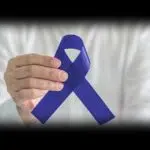Brain Injury Awareness Week, which is from May 11 to May 17, aims to raise awareness about the issues that people suffering from brain injuries face. There can be a range of causes of brain injury. It could be caused by a fall, the head being struck against something, motor accidents, or assaults, to name a few. Whether they are struggling with temporary or permanent disabilities or facing other people’s prejudices, brain injury survivors have to face a lot daily. People with brain injuries should consult professionals to seek the appropriate treatment for their individual problems. Preventative measures, as well as medication and physical/mental therapies, can also help the recovery process.
History of Brain Injury Awareness Week
Brain Injury Awareness Week was first established by Headway. Headway is a British organization dedicated to supporting accident survivors as well as preventing brain injuries. It helps individuals recover and rehabilitates them by providing them with the necessary treatment to get back on their feet. In many cases, Headway has also helped brain injury survivors find new jobs and opportunities in different fields.
Regarding the history of brain injuries, in the old times, brain injury often meant severe and permanent disability or even death. To relieve people of the problems caused by brain injuries, doctors, due to a lack of research, would drill holes into their skulls. This drilling technique would, more often than not, result in other serious complications.
However, with 20th-century advanced medical research, more brain injury patients became survivors instead of victims. Brain injuries are measured and diagnosed according to their severity (mild, moderate, and severe). Also known as intracranial injury, brain injuries can be caused through external impacts and/or rapid acceleration/deceleration, amongst others. A brain injury victim can suffer from social, physical, mental, behavioral, and emotional symptoms that may be temporary or permanent, at times even resulting in death. Several factors can determine the extent to which a brain injury can or will impact a person’s life, for example, the actions of those who are around the victim, the response time of the medical team, the quality of the medical treatment and equipment, and so forth. But, as they say, prevention is better than cure. Preventative and safety measures could include helmets, seatbelts, fall prevention efforts, and special safety protocols.
Brain Injury Awareness Week timeline
Brain injury victims receive better and advanced medical treatment, drastically increasing survival rates.
Researchers Levin, Benton, and Grossman remark that a trepanning tool was used by renaissance doctors to treat their patients’ pain due to brain injuries.
Brain injury becomes part of a special education category in the Individuals with Disabilities Education Act (IDEA).
Despite the fact that someone is impacted by a brain injury every nine seconds in the U.S., a study conducted by the Brain Injury Association of America reveals that one in three Americans do not know what a brain injury means.
Brain Injury Awareness Week FAQs
What color is the ribbon for traumatic brain injury?
Many websites recognize green as the color for traumatic brain injury (TBI) and blue for all brain injuries.
Is March Brain Injury Awareness Month?
March is considered Brain Injury Awareness Month. During this month, the participating organizations decide on a particular theme for all of the events that are taking place.
What are the causes of mild traumatic brain injury?
The Centers for Disease Control and Prevention states that “a traumatic brain injury (TBI) is a disruption in the normal function of the brain that can be caused by a bump, blow, or jolt to the head, or penetrating head injury. Everyone is at risk for a TBI, especially children, and older adults.”
How To Observe Brain Injury Awareness Week
Read up on brain injuries
There’s a lot you can learn about how a brain injury is caused. By doing so, you will be better educated about what to do should you be faced with such a situation in your life.
Spread awareness
Use your social media platforms to reach a wider audience and spread awareness during this week. If you are not a social media person, no worries. You can directly talk to your friends and family about the campaign.
Donate to organizations
Look up brain injury organizations and the work they do to support brain injury survivors. If you cannot donate, you can still help the community by volunteering and ‘donating’ your time to the cause.
5 Facts About The Brain That Will Blow Your Mind
100% brain usage
It’s false to claim that humans only use 10% of their brain because they actually use 100% of their brain — even while sleeping, a human brain is more than 10% active.
Brain growth in the first year
A baby’s brain will grow three times the size during the first year of its life.
Dreams indicate brain function
Dreaming, a combination of neurology, psychology, and imagination, is evidence of the fact that the brain is still active even while we sleep.
Size does not matter
Bigger brain size has no impact on the intelligence or other functionings of a person.
Hungry brain
Your brain uses around 20% of the oxygen and blood in your body.
Why We Love Brain Injury Awareness Week
It’s a reminder of safety
Brain injuries can be extremely devastating, especially since our brains control everything that goes on in our bodies. Taking preventative measures and safety protocols seriously are great ways to prevent brain injuries from happening in the first place.
It’s a reminder of support and unity
One of the best ways to support brain injury survivors is by being there for them. Studies show that physical wounds heal faster and better if a person is mentally motivated and happy. Thus, being there for the survivors in their struggle is one of the best ways to help them in the healing process.
It’s a reminder of medical advancements
Science has progressed tremendously over the centuries. From drilling a hole into the skull to helping with the pain and performing complicated brain surgeries with advanced equipment, medicine has come a long way. The high survival and recovery rates are evidence of these medical advancements.
Brain Injury Awareness Week dates
| Year | Date | Day |
|---|---|---|
| 2026 | May 11–17 | Monday–Sunday |
| 2027 | May 11–17 | Tuesday–Monday |
| 2028 | May 11–17 | Thursday–Wednesday |
| 2029 | May 11–17 | Friday–Thursday |
| 2030 | May 11–17 | Saturday–Friday |



















